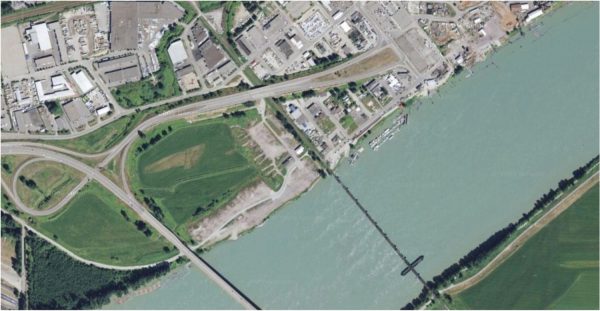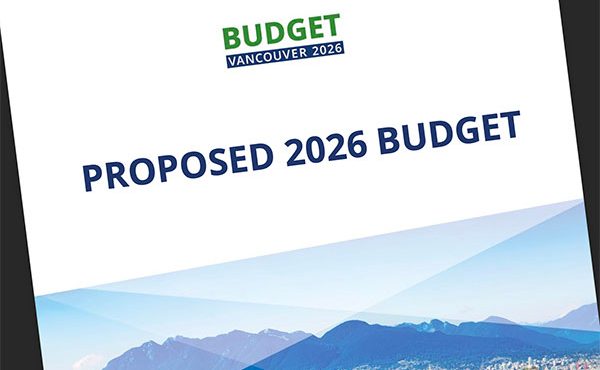
It’s time for the new normal. But what exactly is the new normal? For the city building sector, it could be using a confluence of unprecedented new opportunities to drive economic recovery while transforming communities across the province into inclusive, affordable, climate-positive places for generations to come. And it all starts with the redevelopment of underutilized brownfield lands to revitalize our cities.
While the economic fallout caused by the COVID-19 pandemic is forcing governments at the federal and provincial level to develop policies and programs for stimulating the economy, revitalization of our cities on underutilized lands is a tried-and-true method to both boosting our economy and providing transformative benefits to our cities and quality of life. Many cities have successfully redeveloped large, former brownfield lands in prime locations, including Hudson Yards in New York City, Porto Nuova in Milan, and Canary Wharf in London creating brilliant new waterfront communities with exponential economic impacts.
In the post-Brexit and post-COVID recovery efforts in the UK, the Thames Estuary Growth Initiative has just been launched to drive sustainable, economic growth; regenerate infrastructure; and improve transport and connectivity. This will be the UK’s largest growth opportunity focused on revitalization along the Thames River to promote economic recovery. Backed by a £1.5bn investment by the UK government and 17 local municipalities, this will be a fascinating initiative to keep an eye on.
In BC, we currently have more than 6,000 registered brownfield sites with active potential for redevelopment sitting derelict and underutilized. In a land constrained region with an affordability crisis, urban sprawl, climate impacts, and a pandemic, there is a cost to inaction on these lands.
There is plenty of evidence to support the idea that focusing on the revitalization of underutilized post-industrial lands should be a key piece of the federal government’s strategy to boost economic recovery. Here in Canada, we can look to revitalization projects on former brownfield waterfront lands, like the West Don Lands in Toronto and the Forks in Winnipeg to see the huge economic spinoffs, among them: job creation increased and diversified tax base, unlocked development potential and new revenue opportunities for both the public and private sector.
West Don Lands – Toronto, ON

The West Don Lands waterfront redevelopment is a great example of how once-derelict, underutilized 80 acres of land can transform a city and aid in economic growth. The masterplan for this transit and pedestrian-oriented community includes 6,000 residential units, 900,000 square feet of commercial space, 23 acres of parks and public space, community centres, and schools. Through partnerships with local non-profits, 20% of the new housing was built as affordable housing for seniors and families.
The governments’ investment in the award-winning West Don Lands revitalization has not only delivered an exceptional, climate-positive waterfront community to Toronto, but has more than doubled the value of government investments on the waterfront by:
- $3.2 billion in economic output for the Canadian economy
- 16,200 full-time years of employment
- $3.2 billion in economic output to the economy
- $460 million in construction industry investments
- attracting $2.6 billion in development projects
- $620 million in revenue directly back to the governments
These statistics are not Toronto-centric.
Data from the United States indicates that across US cities, every $1 of public sector investment in revitalization efforts attracts $20 in private sector investment, as well as generating significant job growth.
Waterfront Revitalization – Mission, B.C.

Some communities across Canada are already exploring opportunities to drive economic development and key social, environmental, and cultural priorities by redeveloping their underutilized waterfront lands.
In BC, the District of Mission is currently taking the lead.
Mission’s waterfront is a 300-acre underutilized former industrial site and the largest undeveloped waterfront in the Lower Mainland. With the collaboration of landowners, First Nations, and businesses in the area, Mission Council is investing in a proven and comprehensive revitalization strategy based on lessons learned from other nationally and globally successful waterfront revitalization initiatives. District staff, with our team as the lead consultants, are working to develop an innovative and comprehensive revitalization strategy.
Mission’s waterfront will include a mix of housing options for all income levels and significant commercial and industrial employment space. Parks, waterfront promenades, and community spaces will be woven in to create a series of walkable waterfront communities connected by transit to the rest of the region.
Funding Opportunities
Funding for municipal revitalization initiatives and their project partners are available through several different sources.
Federation of Canadian Municipalities (FCM) Green Municipal Fund provides funding opportunities for catalyzing the revitalization and redevelopment of brownfield sites for all project phases. Examples of areas of work where funding is available include: action plans and feasibility studies, site analysis, site remediation, and risk management, and capital funding for project implementation.*
The Federal Gas Tax Fund provides funding to municipalities across each province with brownfield redevelopment as a priority focus area. Local governments (municipalities, designated First Nations) can access funding through this program to implement brownfield redevelopment projects in their communities.**
Call to Action for Cities
The ongoing COVID-19 crisis has amplified the growing calls for resilient cities that can effectively operate during times of crisis. As cities strive to meet the need for well-located, affordable housing to accommodate swelling urban populations—where jobs, schools, shops, and transit are located—governments at all levels must work to catalyze the development of underutilized brownfields, adding critical density needed to build housing supply within mixed-use complete communities. This means cities taking the lead and championing the necessary steps required to unlock the potential of their underutilized brownfield lands.
If cities are the backbone of the economy, we must ensure that the backbone is prepared to carry the weight of future challenges. We have a powerful and unparalleled opportunity to reinvest, rebuild, and reimagine our cities as places where we can all thrive for generations to come while we rebuild our economy.
********
*More information about FCM grants: https://fcm.ca/en/funding
**For more information about the Federal Gas Tax Fund: https://www.infrastructure.gc.ca/plan/gtf-fte-eng.html.
*******
Carla Guerrera is the CEO & Founder of Purpose Driven Development and Planning, a firm focused on unlocking complex redevelopments to create communities where all can thrive. She is the former project lead for the West Don Lands with Waterfront Toronto and the lead consultant working with the District of Mission on waterfront revitalization. Carla was recently appointed to the Thames Estuary Growth Board, the UK’s largest growth opportunity focused on revitalization along the Thames River to promote economic recovery post-Brexit and post-COVID.




